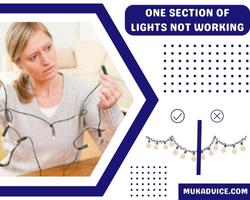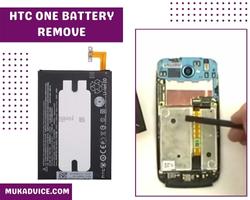There’s nothing more comforting for parents than knowing they can keep an eye on their little one, even when they’re not in the same room. Infant Optics baby monitors provide that peace of mind by offering reliable video and audio feeds.
However, one of the most common issues parents face is the “Out of Signal Coverage” warning. It can be frustrating when you’re trying to ensure your baby is safe and secure, but the monitor suddenly loses connection.
Don’t worry , this issue is not as serious as it may seem, and more often than not, it’s a simple fix! Whether it’s caused by distance, interference, or a power issue, there are several ways to troubleshoot and restore your monitor’s signal. In this guide, we’ll walk you through the causes behind the “Out of Signal Coverage” problem and offer easy-to-follow steps to fix it.
By the end of this article, you’ll feel empowered to tackle this issue head-on and get your Infant Optics baby monitor working smoothly again.
Infant optics out of signal coverage
Let’s dive in and ensure that your monitor is always ready to keep you connected to your little one!
What Does “Out of Signal Coverage” Mean on Infant Optics?
The “Out of Signal Coverage” warning appears on your Infant Optics monitor when the connection between the camera and the parent unit is disrupted. Essentially, this message means that the two devices are no longer able to communicate with each other, leading to a temporary loss of the live video and audio feed from your baby’s room.
While this is a common issue, it’s important to remember that it’s usually fixable and often just requires a little troubleshooting.
Common Causes of the “Out of Signal Coverage” Issue
To effectively address the problem, you need to first understand the potential causes. Let’s dive into the most common reasons behind the signal loss between your Infant Optics baby camera and monitor.
1. Distance Between Camera and Parent Unit
The most common cause for signal loss is simple: distance. Infant Optics baby monitors typically have a range of around 500 feet (150 meters) indoors, depending on the model. If you move the parent unit too far from the camera, you’ll experience signal issues. This could happen if you’re moving between rooms or even if your monitor is placed at an odd angle.
2. Obstructions or Interference
Another major factor that can cause the signal to drop is physical interference. Walls, floors, and large furniture can obstruct the signal between the camera and the monitor. Electronic devices like Wi-Fi routers, microwaves, or cordless phones can also interfere with the signal, especially if they operate on the same frequency (usually 2.4 GHz).
3. Weak or Disrupted Power Source
If either the camera or parent unit is powered off or the power supply is weak, the signal may drop. This could be due to a power outage, dead batteries, or faulty connections.
4. Firmware Issues
Sometimes, a software or firmware glitch can cause the signal to drop unexpectedly. Manufacturers like Infant Optics release firmware updates to resolve such issues, so not updating your device can lead to signal problems.
5. Device Pairing Issues
In some cases, the camera and parent unit might become unpaired. This can happen if you accidentally reset the monitor or if it’s been a while since the monitor was first set up. When the devices are unpaired, you’ll see the “Out of Signal Coverage” message.
Step-by-Step Guide to Fix “Out of Signal Coverage”
Now that you know what might be causing the issue, let’s go through the steps to get your Infant Optics baby monitor back up and running!
Step 1: Check the Distance Between Camera and Parent Unit
First things first, check how far apart the camera and parent unit are. If they are on different floors, in opposite corners of the house, or in areas with lots of thick walls, it’s likely that you’ve exceeded the range of the monitor.
What to Do:
- Move the parent unit closer to the camera. Ideally, you should keep the camera and parent unit within 50 feet (15 meters) of each other.
- Avoid placing the parent unit in a basement, attic, or other areas with weak reception.
Step 2: Remove Obstacles and Interference
Take a look around the area and remove any large physical obstructions between the camera and the parent unit. If the camera is in a different room, make sure there aren’t too many walls or metal objects in the way.
What to Do:
- Move the camera and monitor to more open areas.
- Avoid placing the camera near electronic devices like Wi-Fi routers, microwave ovens, and cordless phones, as these can interfere with the signal.
- Try turning off other devices that could cause interference to see if the signal improves.
Step 3: Ensure Both Devices Are Powered On
It’s possible that either the camera or the parent unit isn’t powered on properly, leading to the loss of signal. Double-check both devices to ensure they are plugged in or charged.
What to Do:
- If the camera or parent unit is powered by batteries, make sure they are fully charged or replace them with fresh ones.
- If the devices are plugged into outlets, check for any loose connections or faulty power cables.
Step 4: Re-pair the Camera and Parent Unit
If the camera and parent unit have become unpaired, you will need to re-pair them to restore the signal. This is a straightforward process that usually requires a reset.
What to Do:
- Unplug the camera and turn off the parent unit.
- Wait for a few seconds and then turn them both back on.
- Follow the pairing instructions in your user manual. Typically, this involves holding down a pairing button on both devices until they reconnect.
Step 5: Update the Firmware
If your monitor is still giving the “Out of Signal Coverage” message, there might be a firmware issue. Manufacturers often release software updates to fix bugs and improve performance.
What to Do:
- Check the manufacturer’s website or app for the latest firmware updates.
- Follow the instructions to update the firmware on both the camera and the parent unit.
Step 6: Perform a Factory Reset
If nothing else works, performing a factory reset can often clear out any persistent issues. Keep in mind that this will erase all of your settings and preferences, so use this option as a last resort.
What to Do:
- Locate the reset button on the camera or parent unit (refer to your manual for exact location).
- Hold the reset button for 10-15 seconds until the device restarts.
- After the reset, you’ll need to re-pair the devices and set up your preferences again.
Tips for Preventing Future Signal Issues
While occasional signal loss can happen, there are a few things you can do to prevent it from becoming a regular issue.
- Place your camera strategically: Try to keep the camera in a central location with minimal obstacles between it and the parent unit.
- Limit interference: Keep the monitor away from other electronic devices, and consider using a Wi-Fi extender if you’re in a large home.
- Use a reliable power source: Always keep both devices charged or plugged in to avoid power-related issues.
Conclusion
Experiencing the “Out of Signal Coverage” error on your Infant Optics baby monitor can certainly be frustrating, but rest assured, it’s usually a problem that can be fixed with a few simple steps. Whether it’s a matter of distance, interference, or a minor technical glitch, you now have the tools and knowledge to troubleshoot and resolve the issue quickly.
Remember, by checking the range, eliminating potential interference, ensuring the devices are powered properly, and re-pairing the camera and monitor, you can often restore the signal without much hassle.
Keeping your devices updated and performing occasional resets can also help prevent future problems, ensuring your monitor stays reliable when you need it most.
Above all, don’t hesitate to reach out to customer support if the problem persists – they can offer further assistance to get your monitor back to full functionality.
With these troubleshooting tips in hand, you’ll be able to continue monitoring your baby with confidence and peace of mind. Stay calm, stay connected, and most importantly, enjoy those precious moments with your little one, knowing your baby monitor is working perfectly!






